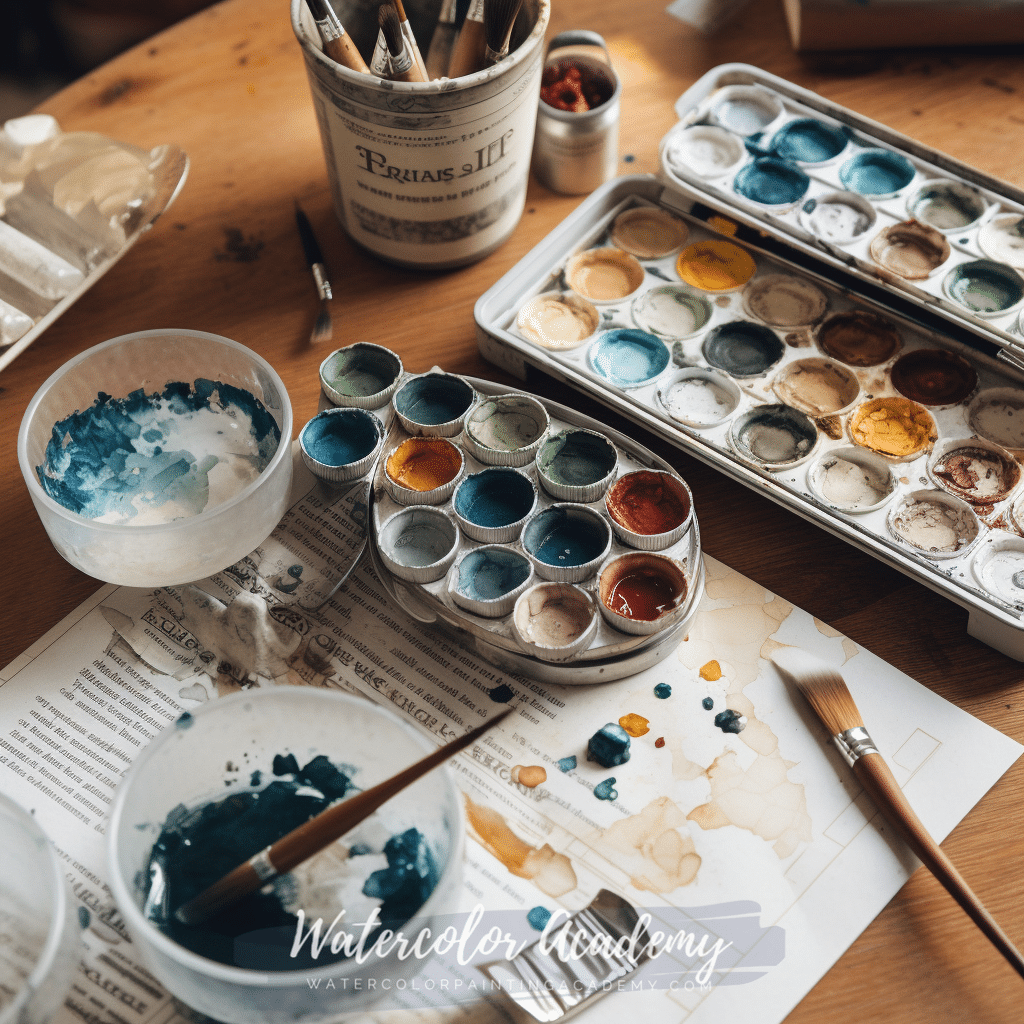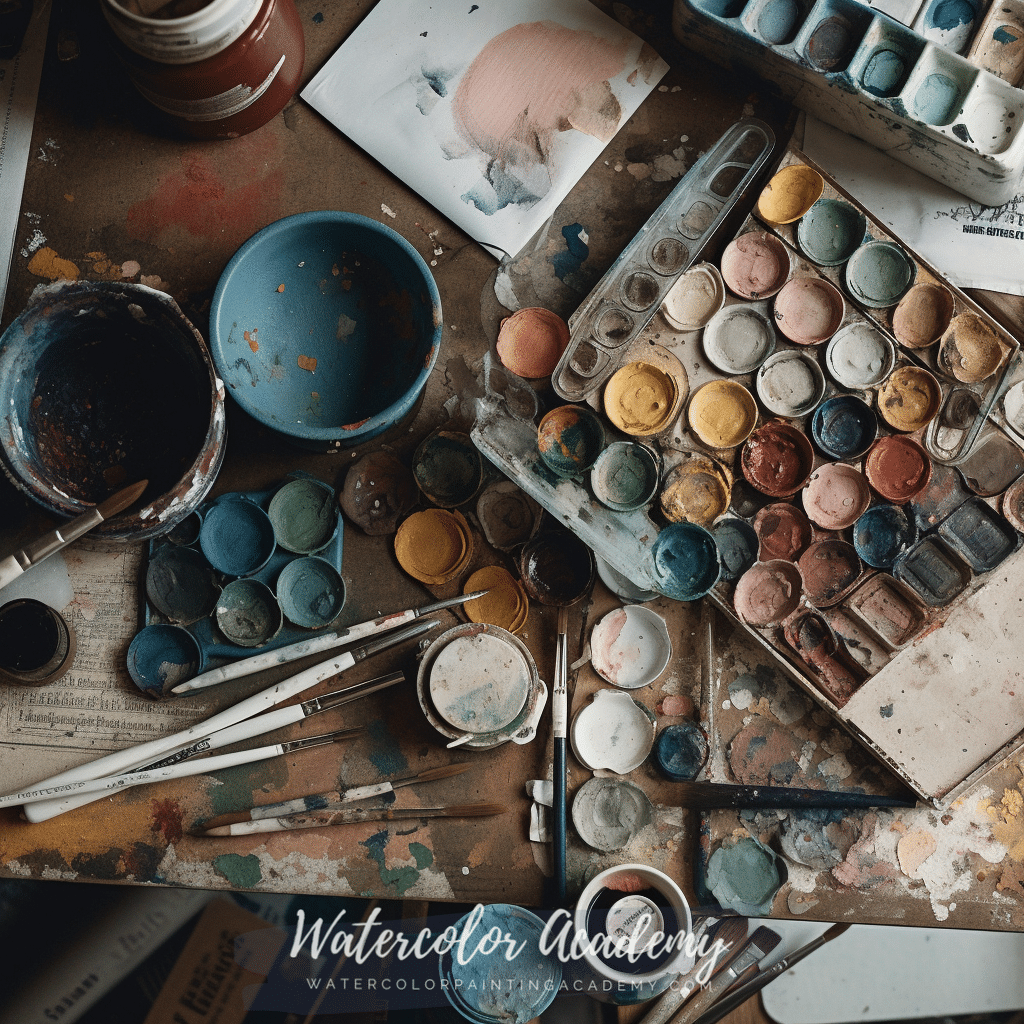Welcome to the world of watercolor painting! In this blog post, we’ll explore the main components of watercolor paints: pigments, binders, and additives. Understanding these ingredients can help you make informed decisions about your art supplies and ultimately elevate your artwork.

Pigments: The Heart of Watercolor Paints
Pigments are the backbone of any watercolor paint, providing color. They come in various forms, such as natural or synthetic, and can be organic or inorganic. Here are some key aspects of pigments:
- Color: The hue of a pigment depends on its chemical composition and particle size.
- Transparency: Some pigments are more transparent than others, which affects the paint’s ability to layer and create depth.
- Lightfastness refers to a pigment’s resistance to fading when exposed to light. High-quality pigments have better lightfastness.
Binders: Keeping Pigments in Place
Binders are responsible for holding the pigments together and adhering them to the paper. In watercolor paints, the most common binder is gum Arabic, a water-soluble substance derived from the acacia tree sap. Some characteristics of binders include:
- Flexibility: A good binder should be flexible enough to prevent the paint from cracking when it dries.
- Solubility: The binder should dissolve easily in water, allowing the paint to flow smoothly and blend with other colors.
- Gloss: Some binders can impart a slight gloss to the paint, affecting the final appearance of the artwork.
Additives: Enhancing Paint Performance
Additives are optional ingredients that can be added to watercolor paints to improve their performance or provide specific effects. Some common additives include:
- Extenders: These substances, such as kaolin or chalk, can be added to increase the volume of paint without affecting its color. However, they can reduce the intensity and transparency of the pigment.
- Wetting agents: These help the paint disperse more evenly in water and improve its flow on the paper.
- Preservatives: Since watercolor paints are water-based, they can be prone to mold and bacterial growth. Preservatives, such as synthetic fungicides, can be added to prolong the paint’s shelf life.
- Stabilizers: These can be added to prevent pigment settling or separation, ensuring a consistent paint texture.

Choosing the Right Watercolor Paints for Your Art
Now that you understand the ingredients in watercolor paints, you can make more informed choices when selecting your art supplies. When choosing your watercolors, consider factors like pigment quality, binder type, and desired additives. Ultimately, experimenting with different paints and understanding their ingredients will help you develop your unique artistic style. Happy painting!



